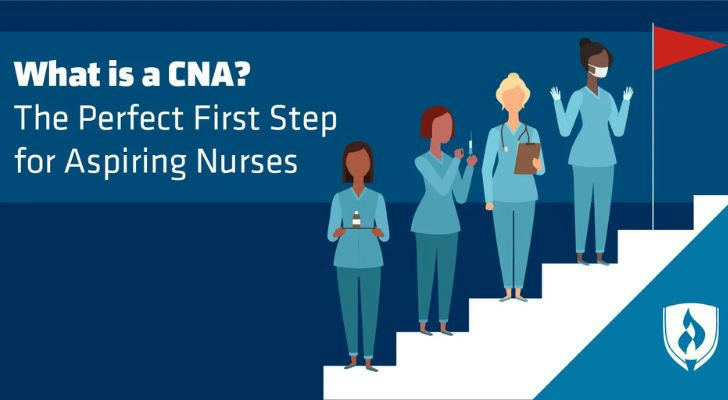CNA vs. LPN: Which Career Path Fits You Best?
When exploring entry-level healthcare careers, two common paths stand out: Certified Nursing Assistant (CNA) and Licensed Practical Nurse (LPN). Both roles are essential in the healthcare system, offering a chance to work directly with patients and contribute to their well-being. However, each path comes with its own responsibilities, training requirements, and career opportunities. Understanding these details can help individuals decide which role suits them best.

1. Role and Responsibilities
CNA (Certified Nursing Assistant)
Provides basic care under the supervision of registered nurses (RNs) or licensed practical nurses (LPNs).
Helps patients with daily living activities, including bathing, grooming, dressing, toileting, and feeding.
Assists with patient mobility such as transferring from beds to wheelchairs.
Measures and records vital signs like blood pressure, pulse, temperature, and respiratory rate.
Observes and reports any physical or emotional changes in patients.
Supports patient comfort and maintains a safe environment.
LPN (Licensed Practical Nurse)
Performs more clinical duties than CNAs and often reports directly to RNs or physicians.
Administers medications, including oral and injectable medications, under state-specific regulations.
Provides wound care, changes dressings, and assists with catheter insertion and maintenance.
Conducts patient assessments, documents observations, and updates care plans.
Monitors patient progress and communicates concerns to supervising nurses or doctors.
May supervise CNAs and coordinate daily nursing care within their assigned unit.
2. Education and Training Requirements
CNA Training
Most programs range from 4 to 12 weeks.
Curriculum includes basic nursing skills, infection control, patient rights, and communication.
Requires hands-on clinical training in healthcare settings under supervision.
Upon completion, students must pass a state certification exam, which typically includes a written and a skills-based portion.
LPN Training
Generally takes 12 to 18 months to complete.
Education involves in-depth instruction in anatomy, physiology, pharmacology, medical-surgical nursing, and pediatric care.
Clinical rotations are included to build experience in real-world medical environments.
Must pass the NCLEX-PN examination to become licensed and practice legally in most states.
3. Work Settings
Both CNAs and LPNs can find employment in a variety of healthcare settings, including:
Long-term care facilities (nursing homes and assisted living)
Hospitals (acute care and rehabilitation units)
Private home healthcare
Outpatient clinics
Hospice care organizations
LPNs may have access to more job roles within clinical and administrative capacities due to their extended training and licensure.

4. Salary Comparison
Based on data from the U.S. Bureau of Labor Statistics (BLS):
CNAs earned a median annual salary of $35,760 in 2023.
LPNs earned a median annual salary of $59,730 in 2023.
Source: U.S. Bureau of Labor Statistics, Occupational Employment and Wage Statistics, May 2023
Salaries can vary by location, experience, and healthcare facility type. Urban centers and specialized facilities often offer higher wages.
5. Career Advancement Opportunities
CNA Advancement
Offers a foundation for pursuing more advanced nursing roles, such as LPN or Registered Nurse (RN).
Can take additional certifications to specialize (e.g., patient care technician, medication aide).
Some healthcare employers offer tuition reimbursement or support further education.
LPN Advancement
Easier transition to RN through bridge programs (LPN-to-RN or LPN-to-BSN programs).
Opportunities to specialize in areas like geriatrics, pediatrics, or palliative care.
May move into supervisory or administrative roles over time.
6. Skills and Qualities That Help in Each Role
For CNA Roles
Compassion: Essential for working with vulnerable or elderly patients.
Physical Endurance: Job often requires standing for long
periods and assisting with lifting or transferring patients.
Observation: Being able to notice small changes in a patient’s condition can be critical.
Communication: Helps build trust with patients and ensures accurate reporting of concerns.
For LPN Roles
Clinical Competence: Must be comfortable with medical procedures and decision-making.
Attention to Detail: Needed when administering medications or documenting care.
Leadership: May be responsible for managing CNAs or coordinating patient care.
Emotional Resilience: Regular exposure to stressful situations and patient suffering.

7. State-by-State Variations
Licensure scope and responsibilities can differ by state. For instance:
In California, LPNs (called LVNs in that state) may have slightly different legal scopes than in Florida.
Some states allow LPNs to administer intravenous (IV) medications after additional certification.
CNA scope may vary slightly in tasks like blood sugar testing or assisting with therapy exercises.
It’s important to consult the respective state’s Board of Nursing for updated guidelines.
8. Lifestyle Considerations
Choosing CNA
Shorter training allows faster entry into healthcare roles.
Offers valuable experience for those deciding whether to pursue more advanced nursing.
Flexible schedules often available, suitable for balancing school, parenting, or other commitments.
Choosing LPN
Involves a longer initial time commitment but offers higher income and more responsibilities.
More likely to work in structured shifts with expanded duties.
Suitable for those committed to long-term healthcare careers or planning to become RNs later.
Conclusion
Both CNA and LPN roles are vital to patient care and healthcare operations. Choosing the right path depends on individual preferences, career goals, and readiness to take on more clinical responsibility. CNA roles provide quick entry and are ideal for gaining initial experience. LPN roles, while requiring more training, open up broader career options and higher compensation.
Exploring both paths thoroughly, reviewing local regulations, and speaking with professionals already in the field can offer valuable insights into what path aligns best with personal and professional goals.
